Unlock your basketball potential with specialized strength training for basketball. Improve agility, power, and endurance to dominate the court. Elevate your game with targeted strength training for basketball.
Introduction
In basketball, having the right kind of strength is super important. Whether you’re playing in big leagues like the NBA or just shooting hoops in your local park, being strong in the right way can make a huge difference.
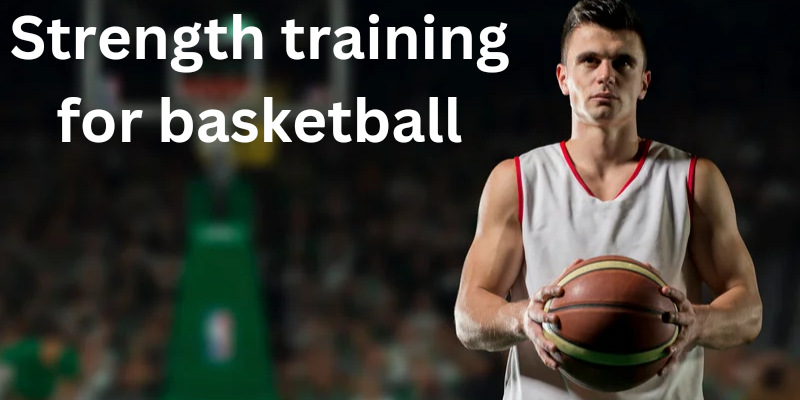
Basketball players need a special kind of strength. It’s not just about lifting heavy weights like powerlifters do. We need to be explosive, enduring, and able to move quickly and powerfully in different directions. Imagine being able to jump high, sprint fast, and outmaneuver opponents for a whole game without getting tired. That’s the kind of strength we’re talking about.
But how do we develop this kind of strength? That’s what we’re going to dive into in this article. We’ll break down the different types of strength basketball players need and explore the best exercises to help you become a basketball beast. So, let’s get started!
Section 1: Exploring Essential Strength for Basketball Players
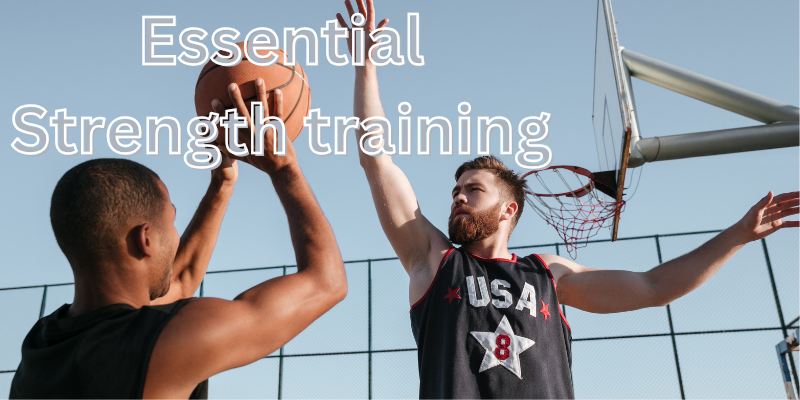
Defining the Types of Strength Required in Basketball:
In basketball, strength isn’t just about lifting heavy weights. It’s about being explosive and powerful in different ways. We need strength to jump high, sprint fast, and push past opponents. This kind of strength is called explosive strength. It helps us make quick moves on the court and stay strong throughout the game.
But there’s more to it than just explosiveness. We also need endurance to keep going for the entire game without getting tired. Endurance helps us stay in the game and perform at our best, even when we’re feeling fatigued.
Another important aspect of strength in basketball is being able to move in different directions. We need strength in our legs and core to change direction quickly and outmaneuver our opponents.
Moving Beyond Traditional Powerlifting Approaches:
Traditional powerlifting approaches focus mainly on lifting heavy weights to build strength. While this can be helpful for some aspects of basketball, it’s not enough on its own. We need to go beyond traditional powerlifting and incorporate exercises that improve our explosiveness, endurance, and agility.
That’s why in this article, we’ll explore a variety of exercises specifically tailored to the unique strength requirements of basketball players. These exercises will help us develop the kind of strength that translates directly to success on the basketball court.
Section 2: Key Elements of Explosive Basketball Performance
The Significance of Explosive Power and Endurance:
In basketball, being explosive is super important. It means we can make quick moves like jumping high for rebounds or sprinting past defenders to score. Explosive power helps us play at our best and outperform opponents.
But it’s not just about being explosive. We also need endurance to keep going for the whole game. Endurance helps us stay strong and focused, even when the game gets tough. It’s what separates the good players from the great ones.
Developing Bilateral and Unilateral Explosiveness:
In basketball, we use both our legs together (bilateral) and one leg at a time (unilateral) to make moves on the court. That’s why it’s important to develop strength and explosiveness in both ways.
Bilateral explosiveness helps us with moves like jumping for a layup or dunking the ball. It requires power from both legs working together.
Unilateral explosiveness is important for moves like driving past a defender or making a quick change of direction. It requires strength and stability in one leg at a time.
By training both bilateral and unilateral explosiveness, we become more well-rounded players who can excel in all aspects of the game.
Techniques for Controlling Body Fatigue During Intense Play:
Basketball is a fast-paced and physically demanding game. As players, we need to know how to manage our energy and prevent fatigue from setting in.
One technique for controlling body fatigue is to pace ourselves throughout the game. We can’t go all out from the start; instead, we need to conserve energy for when it matters most.
Another technique is to focus on our breathing and stay relaxed during breaks in play. Deep breaths help oxygenate our muscles and reduce fatigue.
Finally, staying hydrated and fueling our bodies with the right nutrients is essential for maintaining energy levels throughout the game.
By mastering these techniques, we can stay strong and focused, even during the most intense moments of play.
Section 3: Building Elasticity and Explosiveness
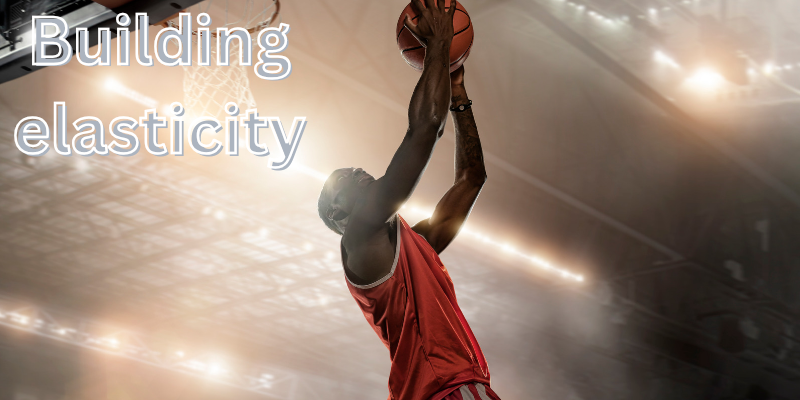
Incorporating Jumping Exercises for Enhanced Elasticity:
Jumping exercises are super important for basketball players. They help us become more springy and explosive on the court. When we jump, our muscles stretch and then quickly contract to propel us upwards. This stretching and contracting action helps improve our elasticity, which is crucial for making fast movements and quick jumps during games.
One way to incorporate jumping exercises is by doing drills like jump squats, box jumps, and vertical jumps. These exercises mimic the jumping motions we use in basketball and help us build the explosive power needed to outjump opponents and grab rebounds.
Strategies to Prevent Fatigue and Improve Performance:
Fatigue can really slow us down on the court and affect our performance. That’s why it’s important to have strategies in place to prevent fatigue and keep us feeling energized throughout the game.
One strategy is to focus on our breathing during breaks in the game. Taking deep breaths can help us relax our muscles and reduce fatigue. It’s also important to stay hydrated and fuel our bodies with the right nutrients before, during, and after games.
Another strategy is to pace ourselves during play. Instead of going all out from the start, we can conserve our energy and gradually increase our intensity as the game goes on. This helps prevent early fatigue and allows us to maintain our performance levels for longer.
Insights from Elite Strength Coach Alvar Meal:
Alvar Meal is an elite strength coach who has worked with top basketball teams like the Chicago Bulls. He’s got some great insights into how to build elasticity and explosiveness for basketball.
One of his key strategies is to focus on triple flexion, which involves bending the ankles, knees, and hips to generate power during movements like jumping. By training in this compressed position, we can develop more explosive muscles and improve our overall athleticism on the court.
Meal also emphasizes the importance of technical coordination, plyometric work, and reflexive exercises for basketball players. These exercises help us become more coordinated in different positions and teach our muscles to react quickly to changes in direction.
By incorporating these insights from Alvar Meal into our training routine, we can take our elasticity and explosiveness to the next level and become even stronger and more agile basketball players.
Section 4: Technical Coordination and Neural Pathway Development
Utilizing Technical Coordination and Plyometric Work:
Technical coordination and plyometric exercises are essential for basketball players to improve their performance on the court. Technical coordination refers to the ability to move efficiently and effectively, while plyometric exercises focus on explosive movements that utilize the stretch-shortening cycle of muscles.
In basketball, technical coordination helps us execute movements like dribbling, shooting, and defending with precision and accuracy. Plyometric exercises, such as jump squats, bounding drills, and depth jumps, enhance our explosive power, agility, and reactive ability.
By incorporating technical coordination drills and plyometric exercises into our training regimen, we can enhance our overall athleticism and basketball skills, allowing us to move more fluidly and explosively on the court.
Enhancing Upper Body Neural Pathways for Improved Performance:
In addition to developing lower body explosiveness, it’s crucial for basketball players to enhance neural pathways in the upper body for improved performance. Neural pathways are the connections between the brain and muscles that control movement and coordination.
Exercises that target upper body neural pathways, such as medicine ball throws, push-ups, and overhead presses, help improve coordination, strength, and power in movements involving the arms, shoulders, and torso. These exercises also aid in developing faster reaction times and more precise movements during basketball plays.
Adapting to Variable Speeds and Joint Angles:
Basketball is a fast-paced game that requires players to adapt quickly to variable speeds and joint angles. To excel on the court, we must train our bodies to react efficiently to changes in speed and direction.
Exercises that involve variable speeds, such as sprinting drills, agility ladder drills, and change-of-direction exercises, help improve our ability to accelerate, decelerate, and change direction rapidly during gameplay.
Additionally, training at different joint angles, such as through squats, lunges, and single-leg exercises, enhances our stability, strength, and mobility across a range of motion. This prepares us to perform basketball movements with optimal biomechanics and reduces the risk of injury during intense gameplay.
By incorporating these training strategies into our routine, we can enhance our technical coordination, optimize upper body neural pathways, and adapt effectively to the variable demands of basketball, ultimately improving our performance on the court.
Section 5: The Garage Strength Exercise System

Introduction to Parabolic Periodization:
The Garage Strength Exercise System is based on a training method called Parabolic Periodization. This approach emphasizes the importance of producing a large amount of force in a short period of time. Instead of focusing solely on lifting heavy weights, Parabolic Periodization incorporates exercises that maximize force production and explosive power.
Exercise 1: Maximizing Force Production in Minimal Time:
The first exercise in the Garage Strength Exercise System is designed to maximize force production in minimal time. This means we want to generate as much power as possible in a short amount of time. One way to do this is through exercises like the two-box snatch or high hang power clean.
These exercises involve explosive movements that engage multiple muscle groups simultaneously, helping us develop the fast-twitch muscle fibers needed for explosive strength. By performing these exercises with proper technique and speed, we can enhance our ability to generate force quickly and efficiently on the basketball court.
Exercise 2: Power Jerk Technique for Explosive Upper Body Strength:
The second exercise in the Garage Strength Exercise System focuses on developing explosive upper body strength through the power jerk technique. This exercise targets the muscles in the shoulders, arms, and upper back, which are essential for performing powerful movements like shooting, passing, and defending in basketball.
The power jerk technique involves a quick dip and drive of the legs, followed by a rapid extension of the arms to propel the weight overhead. By mastering this technique, we can improve our ability to generate explosive force with our upper body, allowing us to execute basketball skills with greater speed and power.
Incorporating these exercises into our training routine as part of the Garage Strength Exercise System can help us build the explosive strength and power needed to excel on the basketball court. By maximizing force production and focusing on explosive movements, we can elevate our performance and dominate the game.
Section 6: Strengthening Lower Body for Explosive Performance
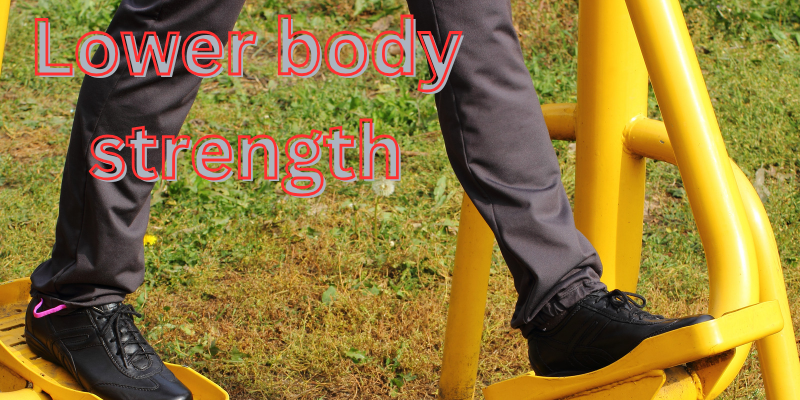
Exercise 3: Single Leg Squats for Lower Body Power:
Single-leg squats are awesome for building lower body power, which is super important for basketball players. These squats help us develop strength in each leg, which is crucial for staying balanced and explosive on the court.
When we do single-leg squats, we’re working muscles like our quads, hamstrings, and glutes. These muscles are responsible for helping us jump high, sprint fast, and change direction quickly during games.
To do single-leg squats, stand on one leg with the other leg extended in front of you. Then, lower yourself down into a squat position, keeping your chest up and your knee in line with your toes. Push through your heel to return to the starting position.
Enhancing Trunk Control and Stability for Basketball Movements:
Trunk control and stability are essential for performing basketball movements with precision and power. Having a strong and stable core helps us stay balanced, move efficiently, and generate force during plays on the court.
We can incorporate exercises like planks, Russian twists, and medicine ball throws into our training routine to enhance trunk control and stability. These exercises target the muscles in our core, including the abdominals, obliques, and lower back, which play a crucial role in maintaining posture and controlling movement.
By strengthening our core and improving trunk control, we can enhance our overall athleticism and basketball performance. We’ll be better equipped to handle the physical demands of the game, stay balanced during dynamic movements, and perform at our best when it matters most.
Section 7: Developing Shoulder Strength and Stability

Exercise 4: Military Press for Shoulder Stability and Upper Body Strength:
The military press is a great exercise for building shoulder stability and upper body strength, which are super important for basketball players. This exercise targets the muscles in our shoulders, triceps, and upper back, helping us develop the strength and stability needed to perform basketball skills like shooting, passing, and defending.
To do a military press, start by standing with your feet shoulder-width apart and holding a barbell or dumbbell at shoulder height. Then, press the weight overhead until your arms are fully extended. Lower the weight back down to shoulder height and repeat for the desired number of reps.
By incorporating the military press into our training routine, we can strengthen the muscles around our shoulders and improve our ability to control and stabilize the joints during basketball movements. This can help reduce the risk of injury and enhance our overall performance on the court.
Debunking Myths About Shoulder Training and Basketball Performance:
There are some common myths about shoulder training and its impact on basketball performance that need to be debunked. One myth is that building shoulder muscle will make us less accurate shooters. In reality, having strong shoulders can actually improve our shooting accuracy by providing stability and control during shooting motions.
Another myth is that shoulder training will make us too bulky for basketball. However, properly structured shoulder training can help us develop lean muscle mass without adding unnecessary bulk. This can improve our strength and power on the court without sacrificing agility or mobility.
It’s important for basketball players to understand the benefits of shoulder training and incorporate it into their overall strength and conditioning program. By doing so, we can improve our shoulder stability, upper body strength, and overall basketball performance, helping us become stronger, more resilient athletes on the court.
Section 8: Incorporating Plyometrics for Sport-Specific Strength
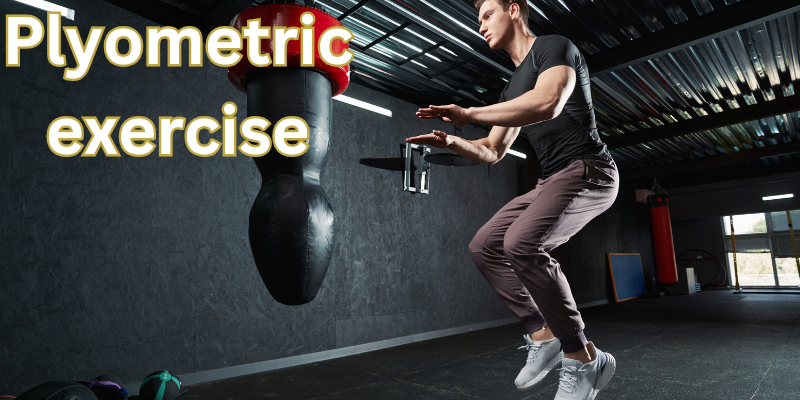
Exploring Plyometric Exercises for Basketball Performance:
Plyometric exercises are awesome for improving sport-specific strength, especially for basketball players. These exercises involve quick, explosive movements that help us develop power, agility, and reactive explosiveness, which are all crucial for success on the basketball court.
Some plyometric exercises that are great for basketball players include jump squats, box jumps, and depth jumps. These exercises help us improve our ability to jump higher, change direction quickly, and explode off the ground with speed and power.
By incorporating plyometric exercises into our training routine, we can enhance our athleticism and basketball performance, making us more explosive and dynamic players on the court.
Exercise 5: Peak Strength’s Pogo Jumps for Reactive Explosiveness:
One awesome plyometric exercise for basketball players is Peak Strength’s Pogo Jumps. These jumps are designed to improve reactive explosiveness, which is super important for making quick moves and reacting to changes on the basketball court.
To do Pogo Jumps, start by standing with your feet hip-width apart and your knees slightly bent. Then, jump up explosively, driving through the balls of your feet and using your ankles, calves, and lower legs to propel yourself off the ground. Land softly and immediately spring back up into the next jump, focusing on quick, reactive movements.
By practicing Pogo Jumps regularly, we can enhance our ability to explode off the ground with speed and power, making us more agile and dynamic players on the basketball court. These jumps are a great addition to any basketball player’s training routine, helping us take our game to the next level.
Section 9: Enhancing Agility and Coordination
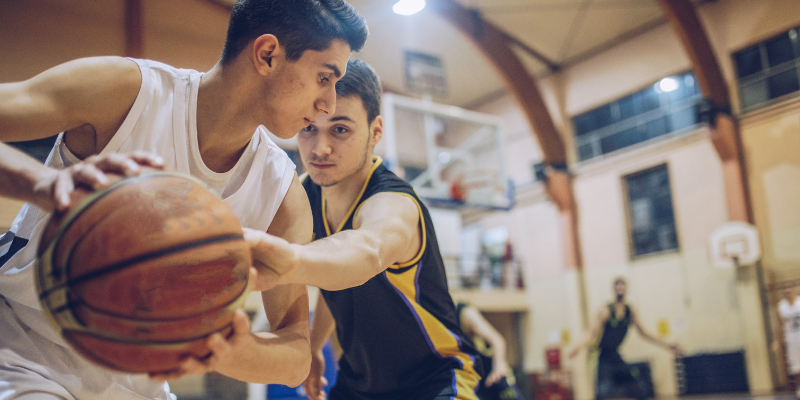
Exercise 6: Rotational Jump Lunges for Dynamic Trunk Control:
Rotational jump lunges are fantastic for improving agility and coordination, especially for basketball players. These exercises focus on dynamic trunk control, which is essential for making quick movements and changes in direction on the basketball court.
To perform rotational jump lunges, start in a lunge position with one foot forward and one foot back. Then, jump explosively into the air while rotating your torso to the side. Switch legs in mid-air and land in a lunge position with the opposite foot forward. Continue alternating sides with each jump, focusing on maintaining balance and control throughout the movement.
By incorporating rotational jump lunges into our training routine, we can enhance our ability to move quickly and efficiently on the court, making us more agile and dynamic players.
Utilizing Medicine Ball Drills for Sport-Specific Training:
Medicine ball drills are awesome for sport-specific training, especially for basketball players. These drills help us develop explosive power, coordination, and sport-specific movements that translate directly to the basketball court.
Some medicine ball drills that are great for basketball players include overhead throws, chest passes, and rotational throws. These exercises help us improve our passing accuracy, shooting power, and overall athleticism on the court.
By incorporating medicine ball drills into our training routine, we can enhance our agility, coordination, and basketball skills, making us more effective and dynamic players on the court. These drills are a great addition to any basketball player’s training regimen, helping us take our game to the next level.
Section 10: Balancing Muscle Hypertrophy with Explosive Performance
Exercise 7: Neutral Grip Pull-Ups for Upper Body Explosiveness:
Neutral grip pull-ups are awesome for building upper body explosiveness, which is super important for basketball players. These pull-ups target muscles in the back, arms, and shoulders, helping us develop the strength and power needed for explosive movements on the court.
To do neutral grip pull-ups, grab a pull-up bar with your palms facing each other and your hands shoulder-width apart. Then, pull yourself up until your chin is above the bar, focusing on using your back and arm muscles to propel yourself upward. Lower yourself back down with control and repeat for the desired number of reps.
By incorporating neutral grip pull-ups into our training routine, we can strengthen the muscles involved in jumping, shooting, and defending, making us more explosive and dynamic players on the basketball court.
Exercise 8: Explosive Push-Ups for Chest and Triceps Strength:
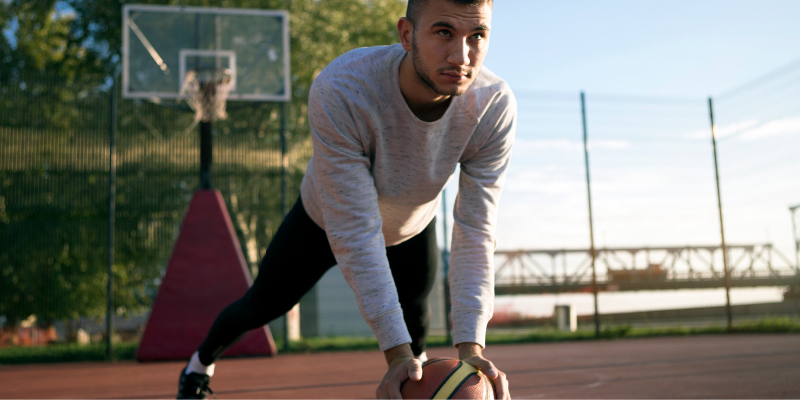
Explosive push-ups are fantastic for building chest and triceps strength, which are essential for basketball players. These push-ups involve explosive movements that help us develop power and explosiveness in our upper body, making us more effective on the court.
To do explosive push-ups, start in a push-up position with your hands slightly wider than shoulder-width apart. Lower yourself down until your chest nearly touches the ground, then push explosively through your hands to propel yourself upward. Land softly and immediately explode back into the next rep, focusing on speed and power.
By incorporating explosive push-ups into our training routine, we can enhance our upper body strength and explosiveness, allowing us to perform basketball skills with greater speed and power. These push-ups are a great addition to any basketball player’s training regimen, helping us maximize our performance on the court.
Section 11: Advanced Movement Drills for Basketball Performance
Exercise 9: Mastering the Euro Step Drill for Court Dominance:
The Euro Step drill is a key move for dominating the court in basketball. It’s all about making quick, deceptive moves to get past defenders and score points. When you master the Euro Step, you become a force to be reckoned with on the basketball court.
To perform the Euro Step, start by dribbling towards the basket. As you approach the defender, take a quick step in one direction, then step in the opposite direction while extending your body to avoid the defender. This move helps you create space and get a clear shot at the basket.
Practicing the Euro Step drill regularly can help you become more unpredictable and difficult to guard on the court. It’s a valuable skill that can take your game to the next level.
Exercise 10: Stair Jumps for Cyclical Jump Training and Endurance:
Stair jumps are a great way to train for endurance and improve your jumping ability on the basketball court. By jumping up and down stairs repeatedly, you can build strength and power in your legs while also increasing your cardiovascular fitness.
To do stair jumps, find a set of stairs with at least three steps. Start at the bottom of the stairs and jump up onto the first step, then immediately jump back down to the ground. Continue jumping up and down the stairs as quickly as you can for a set period of time or a specific number of repetitions.
Stair jumps are a challenging but effective way to improve your overall athleticism and performance on the basketball court. They help you develop explosive power in your legs while also building endurance to keep you going strong throughout the game. Incorporate stair jumps into your training routine to take your game to new heights.
Conclusion:
In conclusion, strength training for basketball is crucial for players at all levels, from amateurs to professionals. By focusing on specific strength requirements tailored to the demands of basketball, players can enhance their performance on the court and reduce the risk of injuries. Through exercises targeting explosive power, endurance, agility, and coordination, basketball players can improve their overall athleticism and dominance in the game.
Strength training for basketball encompasses a variety of exercises, including plyometrics, weightlifting, and functional movements, all designed to improve strength, power, and flexibility. By incorporating these exercises into a structured training program, players can develop the physical attributes necessary to excel in basketball, such as increased vertical jump, faster sprint speed, and improved body control.
FAQs about Strength Training for Basketball
How do you train strength for basketball?
Strength training for basketball involves a combination of exercises targeting key muscle groups used in the sport, such as legs, core, and upper body. This includes weightlifting, plyometrics, and functional movements to improve explosive power, agility, and endurance.
Do NBA players do strength training?
Yes, NBA players incorporate strength training into their overall fitness regimen to enhance performance on the court. Strength training helps them develop the physical attributes necessary for success in basketball, including strength, power, and resilience against injuries.
How can I make my basketball stronger?
To improve basketball strength, focus on a comprehensive strength training program that includes exercises targeting muscles used in basketball movements. This may involve weightlifting, plyometrics, and bodyweight exercises tailored to enhance agility, power, and endurance.
Do NBA players lift before or after practice?
NBA players often incorporate strength training into their practice routines, either before or after on-court sessions. The timing may vary based on individual preferences and schedule, but integrating strength training alongside basketball practice is common among professional players.
Should you lift before or after basketball?
Whether to lift before or after basketball depends on individual preferences, training goals, and scheduling constraints. Some athletes prefer lifting before basketball to maximize strength and energy levels, while others opt for post-practice workouts to avoid fatigue during training sessions.
Why are NBA players so light?
NBA players vary in body size and weight, but many are lean and agile to excel in the fast-paced nature of basketball. While some players may be naturally lighter due to genetics or playing style preferences, they still possess exceptional strength and athleticism to compete at the highest level.